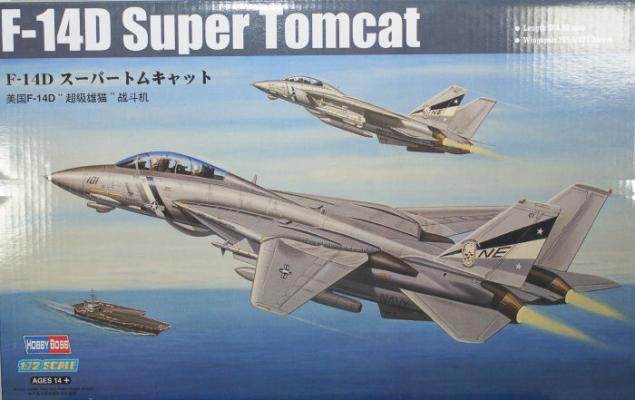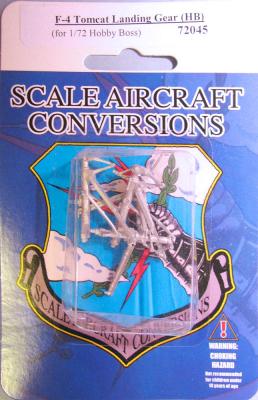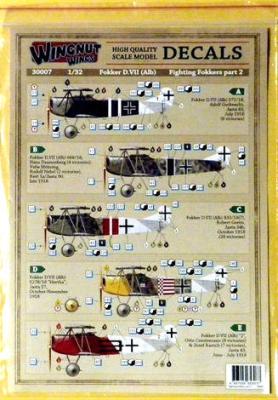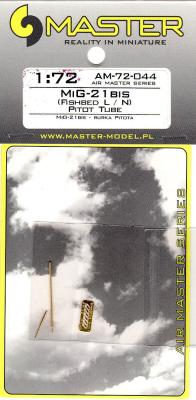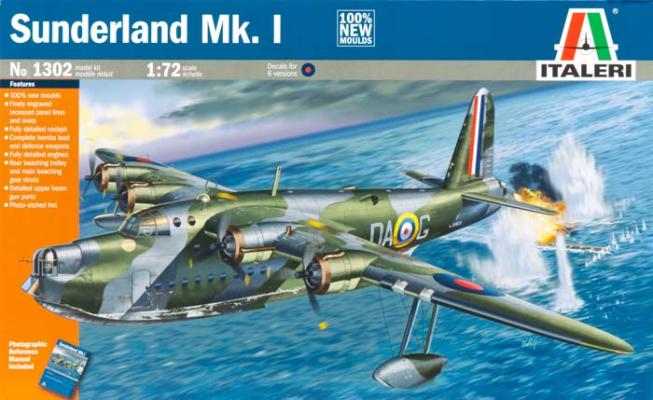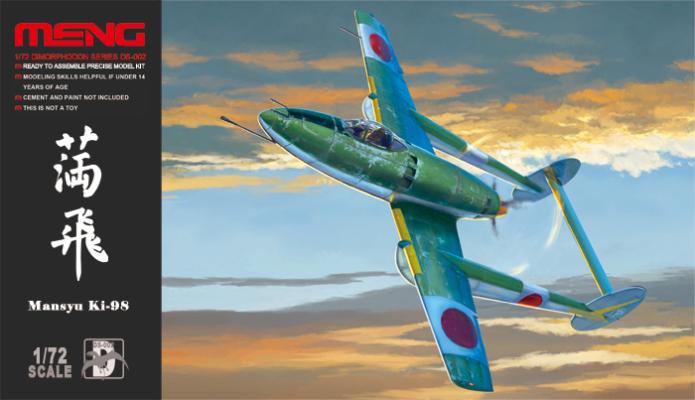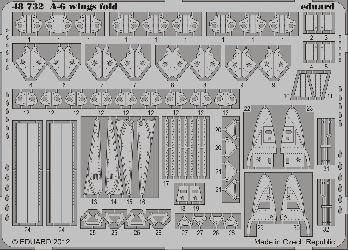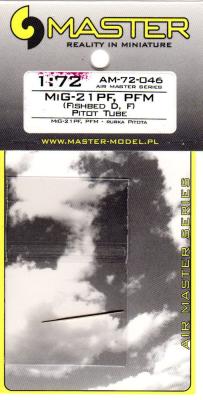One of the newest additions to the fleet of available 1/72 scale F-14D Tomcats is the offering by HobbyBoss. The kit is comprised of one hundred and six individual parts, and they assemble to make a fair representation of this iconic aircraft that was retired from service in 2006. This kit provides the markings for three different aircraft, representing Fighter Squadron 2 serving aboard the USS Constellation (in both low and high visibility) and Fighter Squadron 31 aboard the USS Theodore Roosevelt. Assembly was for the most part easy, making this a kit that I would recommend for anyone who wants to add a mighty Tomcat to his fleet of aircraft.
If most of this review feels like dèjà vu all over again, well, it is, sort of. When my HobbyBoss F-14D kit arrived for me to review, included was a set of the SAC landing gear. This is the same product number that I reviewed against the HobbyBoss F-14A, and as the landing gear did not change from the A to the A+, B, and later D models, the set is appropriate for all. I have added comments for actual installation, but otherwise, much is unchanged.
This is the second decal set released by Wingnut Wings with alternate markings for their new 1/32 Fokker D.VII kits. As noted in my review of Fighting Fokkers part 1, Fokker D.VII fighters were built by three manufacturers: Fokker, Albatros, and OAW, and this set (#30007) provides the unique markings for five of the Fokker D.VII fighters that were built by the Albatros…plus two bonus D.VIIs (as described below).
Product / Stock #s:
- AM-72-044 – MiG-21 BIS (Fishbed L/N) – $7.00
- AM-72-045 – MiG-21 F-13 (Fishbed C) – $7.00
- AM-72-047 – MiG-21 U, US, UM (Mongol) – $7.00
As I have mentioned previously, the MiG-21 is one of my favorite aircraft to model. Also, I have been impressed with the products from Master Model and jumped at the chance to review their latest pitot tubes for various MiG models. This review covers three different pitot tube sets that differ primarily in their length. They all feature pitot tubes with small vanes near the tip to measure angle of attack and yaw. The fronts of the pitots, where the vanes mount, are all similar.
History
The Sunderland prototype first flew on October 16th, 1937, and the first of the production Sunderlands flew on April 28th, 1938. Production started in 1938 and was ended after 8 years. 777 Sunderland’s of all variants were built, and it served in the RAF from June, 1938 ,to May, 1959! Twenty-one years in frontline service for the RAF, and even later for France and New Zealand. (The last New Zealand Sunderland was retired in 1965!!) The Mk I was 85ft 8in. long and had a wingspan of 112ft 8in. Weighing in at 44,600lbs, it was powered by 4 Bristol Pegasus XXII engines rated at 1010hp each, allowing for a top speed of 210mph at 6500 ft.(cruising speed was 178mph). The Sunderland could fly over 1700 miles and was equipped with a galley, bunks, a sink for washing up (with a 25 gal. tank), and a proper, flushing toilet with a supply of water in an 11 gallon tank!
Having built the Academy Special Edition 1/72 Helldiver a couple years ago, I jumped at the opportunity to review the new Cyber-Hobby Helldiver. The kit represents a slightly earlier Helldiver, with one of the most noticeable differences being the solid dive flaps. When the kit arrived, I was very impressed. The molding was well done, with crisp detail and no molding flaws. The kit is the high quality we have come to know from Dragon/Cyber-Hobby.
Meng Models has released yet another great kit. Having built four of their kits now, I cannot say enough good things about them. One of their latest offerings is this great Mansyu Ki-98 Ground Attack fighter. Similar to their first aircraft release, the Katsuodori, the Ki-98 is another Japanese WWII prototype. This one, however, never made it past the wood mock up.
Subject
The Ki-98 was a Japanese prototype high-altitude ground attack fighter. The design has been rumored to be based on a cross between the Shinden fighter and the American P-38 Lightning. The twin-boom, single-seat fighter used a rear-mounted pusher engine, allowing the nose to house two 20mm cannons and a 37mm cannon. The prototype was destroyed prior to Japan’s surrender to Allied forces.
Along with several other photo etch sets made for detailing the Kinetic EA-6B and A-6E kits, Eduard offers this wing fold enhancement. Though the kit detail of the wing fold is adequate, this set definitely fine tunes the whole mechanism and lends a lot of detail. All together, there are 66 pieces of photo etch detail, all of which must be folded at least once, most twice. Removal of four tabs and four hinges on each kit wing gets the process started. These are replaced with three dimensionally-etched hinges and rib detail which, when painted and dirtied up, will give a great depiction of the real thing. Each wing also gets a very delicate manifold and plumbing piece. All of these are etched in the light gauge steel that Eduard sometimes uses, so they are a little more stiff that the normal photo etch, which is great for this application.
My thanks to Eduard for the review sample.
The anticipation of Neil Dunridge's new book A-10 Thunderbolt II 21st Century Warthog was very high among modelers and enthusiasts alike. They certainly were not disappointed. From the eye-opening front cover to the awesome back cover, the author documents the A-10's present life at home and in Afghanistan and Iraq.
The author presents his material in chapters – each chapter a unit flying the A-10. The chapters include seven active U. S. Air Force units, three Air Force Reserve units, six Air National Guard units, and a chapter on the Air National Guard Air Force Reserve Command Test Center.
One of my favorite aircraft to model is the MiG-21. The airplane was the most important fighter of the old Soviet Union for many years and was exported virtually around the world. The number of interesting color schemes abounds.
We have all seen a great number of reviews of impressive parts from Master Model and have purchased a few, so I jumped at the chance to review their new MiG-21 Pitot Tubes. The subject of this review is a solid, milled replacement for the plastic pitot tubes from Fishbed D and F models. These MiG-21 PF and PFM models were a part of the second generation Fishbeds and were widely exported.
The attached photo shows a comparison of the Master Models part against an old Airfix MiG-21 model. A day and night difference. The instruction sheet does a great job of showing how to modify the kit to accept the Master Model part, how to align the new part, and how to paint it.

